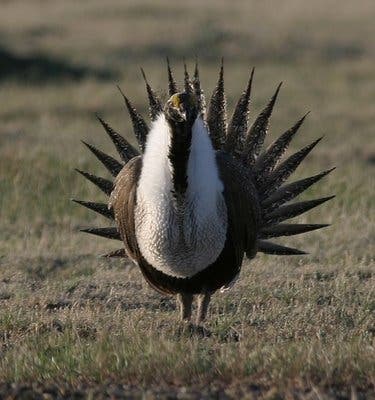
Various animals and plants faced with the danger of extinction may be one step closer to making the official endangered species list, which according to the Endangered Species Act puts them under government protection, as part of a legal settlement plan announced on Tuesday by the government and environmentalists.
Under the agreement, species that the department has already deemed to be at potential risk but whose status remains in limbo, like the New England cottontail and the greater sage grouse of the West, will take priority in the Fish and Wildlife Service workload.
The agreement firstly comes as a victory for the fragile endangered species the act tries to warrant, as both parties have blamed each other along the years of incompetence to proctect nature’s wildlife – environmentalists would bash the government for not listing species under the endangered act faster, the government would shout back to environmentalists that they can’t do their jobs when a heavy flow of litigation by environmental groups and others asking for consideration is filling their desks.
“In recent years, the Endangered Species Act listing program has been mired in litigation,” Deputy Interior Secretary David Hayes said in a telephone briefing. “Priorities are being set by plaintiffs and courts instead of by wildlife professionals, by litigation instead of science.”
Hopefully this rather stupid cat and mouse game that doesn’t help anyone should come to a rest once the settlement passes federal court and becomes official. In total, 251 plant and animal species are classified as “warranted but precluded” from endangered species listing because of bureaucratic legal battles so far, but the plan that puts government and the environmental group WildEarth Guardians at peace will hopefully and finally ensure some minimum protection.
The 251 candidates on the “warranted but precluded” list include birds, butterflies, mammals, fish, mollusks and wildflowers, the environmental group WildEarth Guardians said.
The plan announced jointly by the Interior Department and the group sets a six-year schedule for looking at these species and determining which ones are threatened, endangered or no longer in need of protection, will enable officials “to focus efforts on the species most in need of protection, something we haven’t been able to do in years,” said Gary Frazer, the Fish and Wildlife Service’s assistant director for endangered species.
Most importantly, as part of the plan the government would agree to abide by the six-year timetable and WildEarth Guardians would agree to dismiss its lawsuits and refrain from suing the Interior Department over other missed deadlines for listing species for the next six years.
Before we get our hopes too high tough, we have to consider that the plan hasn’t yet been officially approved, as the settlement filed in U.S. District Court in Washington D.C., must be first approved by a federal judge.
Today, 1,374 domestic species are protected under the Endangered Species Act.
The new agreement sets a precise timetable that could increase the average number of species added to the list to 50 annually, up from an average of 8 under the Bush administration and 29 under the Obama administration.






